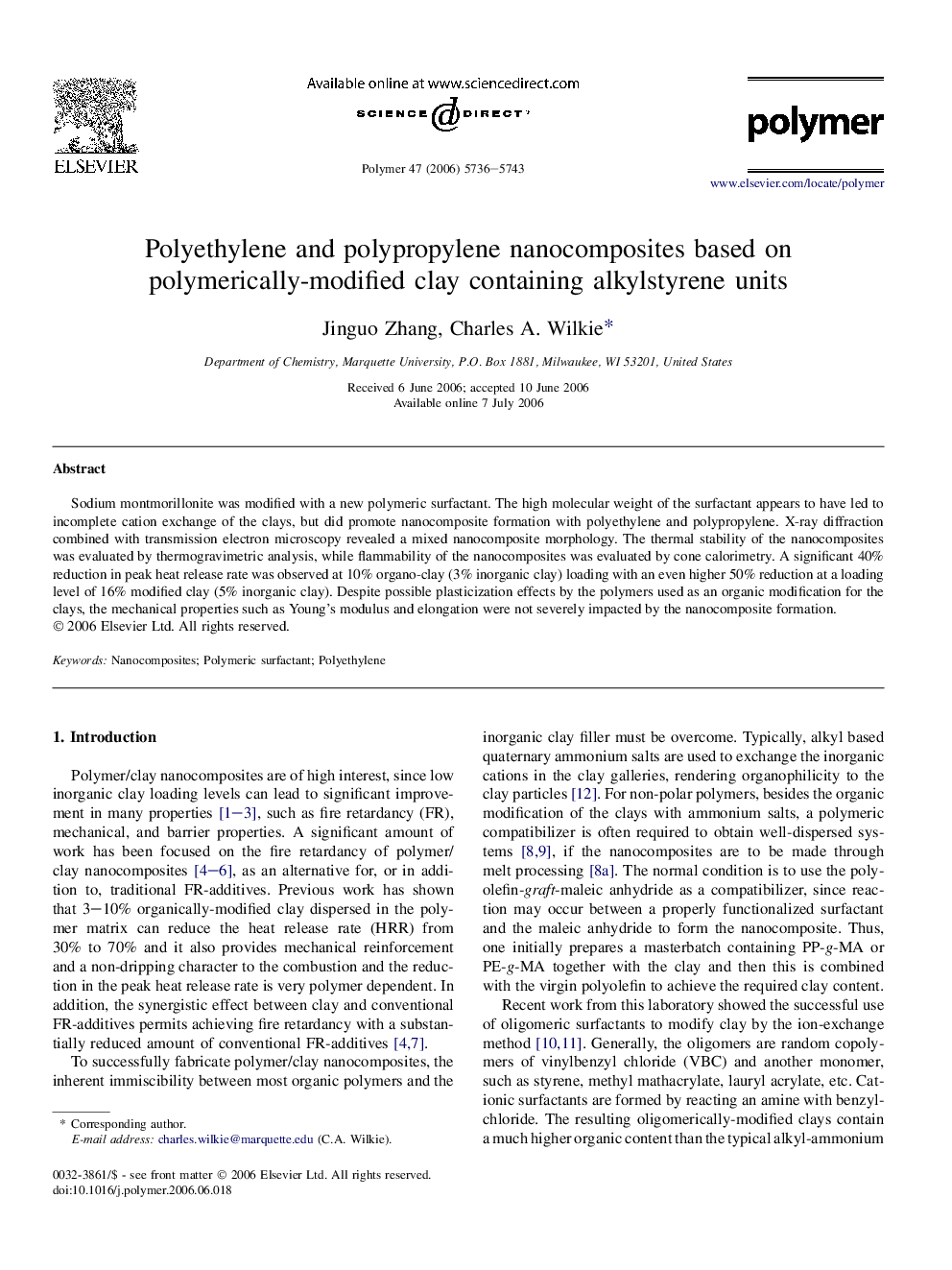| Article ID | Journal | Published Year | Pages | File Type |
|---|---|---|---|---|
| 5190634 | Polymer | 2006 | 8 Pages |
Abstract
Sodium montmorillonite was modified with a new polymeric surfactant. The high molecular weight of the surfactant appears to have led to incomplete cation exchange of the clays, but did promote nanocomposite formation with polyethylene and polypropylene. X-ray diffraction combined with transmission electron microscopy revealed a mixed nanocomposite morphology. The thermal stability of the nanocomposites was evaluated by thermogravimetric analysis, while flammability of the nanocomposites was evaluated by cone calorimetry. A significant 40% reduction in peak heat release rate was observed at 10% organo-clay (3% inorganic clay) loading with an even higher 50% reduction at a loading level of 16% modified clay (5% inorganic clay). Despite possible plasticization effects by the polymers used as an organic modification for the clays, the mechanical properties such as Young's modulus and elongation were not severely impacted by the nanocomposite formation.
Related Topics
Physical Sciences and Engineering
Chemistry
Organic Chemistry
Authors
Jinguo Zhang, Charles A. Wilkie,
